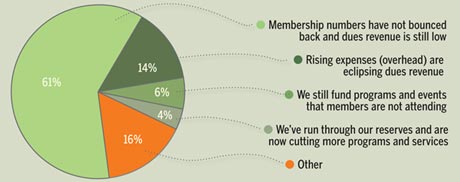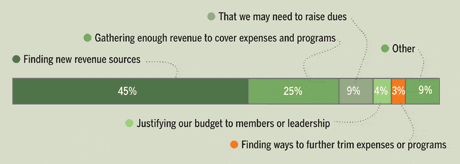Signs of economic recovery are evident nationwide. Forty-seven new metro areas were added to January’s Improving Housing Market Index, which identifies areas that have shown growth in housing permits, employment, and home prices for at least six consecutive months.
Yet, like real estate, recovery is local. Many REALTOR® associations are strengthening or stabilizing, while others are still struggling.
In November 2012, RAE asked REALTOR® associations about the state of their finances and their outlook for 2013.
Is your REALTOR® association better off financially today than three years ago?
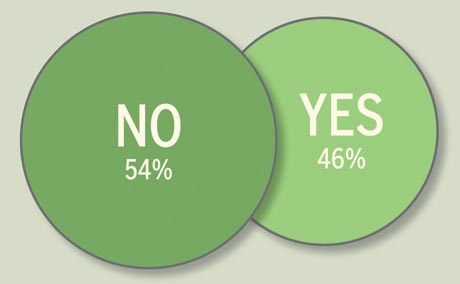
If your association is NOT better off than three years ago, why?
If your association IS better off than three years ago, why?
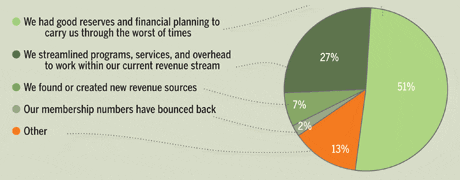
What is your biggest financial concern today?
In the past three years, has the value of your executive salary and benefits stayed the same, gone up, or gone down?
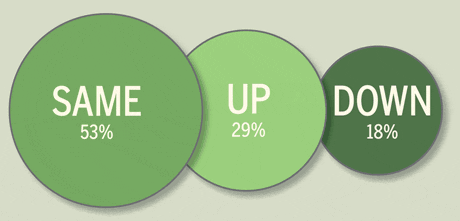
Speak Out: Financial optimism or financial anxiety?
- We can’t raise dues because members will go to the neighboring board, which is willing to cut services and staff to keep dues low, and we have to compete on price. It is a losing game!
- Membership is down somewhat, but we are financially in about the same position that we were three years ago. We have minimally used reserves to date, but absent an increase in membership we will have to increase dues or tap reserves next year.
- It has been very difficult to fill our education classes, which of course is our main source of non-dues revenue and we have had to cancel many, which of course leads to fewer sign-ups as we lose credibility.
- We are financially strong with reserves and our membership has exceeded our budget.
- Members still require services no matter what the total member numbers are, and staff time is stretched as far as it can be.
- We have been successful at cutting a number of expenses, but we still need to find more ways to generate non-dues revenue. We’re looking at Web advertising and revenue-sharing programs with the state and national associations.
- For medium and small associations, technology advances are not affordable but would ease the workload since most have cut staff to trim the budget. Either staff must increase to provide members quality service or the technology that allows fast and efficient work to be completed is needed. Some can’t afford either.
- Although we are not better off than three years ago, the decline is minimal (decrease in balance sheet is less than 5%). We continue to have a comfortable level of reserves. No staff were cut except a couple had a reduction of hours. We feel that we are financially solid for a few more years of decreased membership. As always, finding sources of non-dues income is of great interest.
- The percentage of dropped members at year’s end is getting smaller; however, we are still experiencing a decline. As a result of the lost membership we have cut staff by a third and frozen salaries and benefits since 2008.
- We have offered a huge number of free classes but the members expect everything to be free after they pay dues. We have kept expenses down and recycled everything we can, but we have had to invest in new computers. Things wear out and you have to replace them whether you have the funds budgeted or not.
- Non-dues revenue remains our top priority. In addition to holding a “comedy night” that began in 2012 and we expect to continue as a revenue-generating event, we hope to create a “preferred corporate partnership” program whereby we can offer advertising and promotional opportunities.
RAE’s survey was conducted in November 2012. Representing small to mega associations (fewer than 500 members to more than 5,000 members). 91 association executives responded. Survey percentages rounded.













